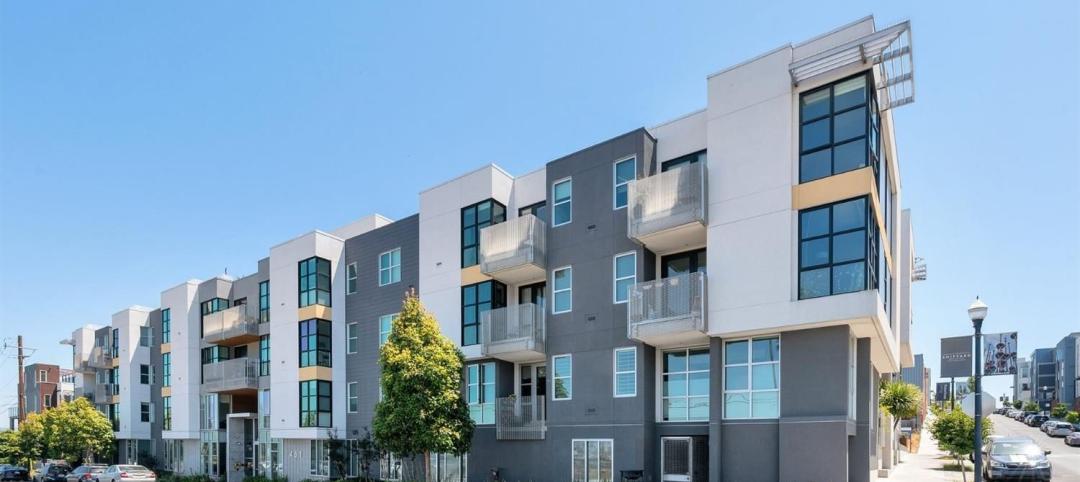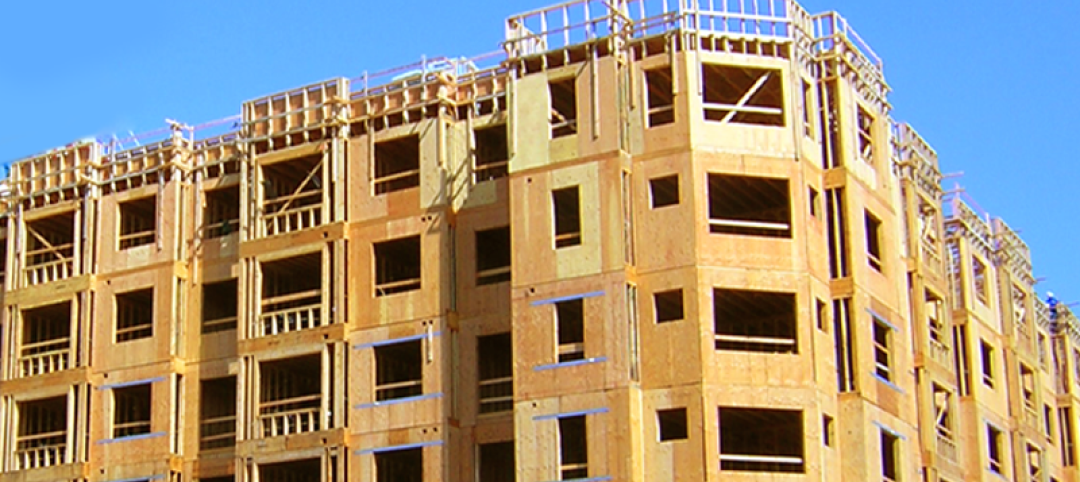As soon as an architect friend showed him a video of the Ori system, Matt Branagh knew it was just what he was looking for. The fourth-generation Owner/CEO of Branagh Development, Lafayette, Calif., saw that Ori could make his studio apartments feel like junior one-bedroom units—perfect, he said, for the “huge wave of people” coming to Oakland from San Francisco to get more space at lower rental cost in a first-class building.
He leased five Studio Suites and purchased eight Pocket Closets for Maya, his firm’s 47-unit apartment building in Oakland, which opened in March. He’s bundling a $275/month premium into the leases for units with a Studio Suite and $95/month for those with a Pocket Closet.
Branagh said tenant adoption for the Pocket Closet was “really strong.” “People get it,” he said. “It’s a price point that they’re willing to pay for, and it’s unique—their friends don’t have it.” He said some prospective tenants were “a little intimidated” working the robotic keyboard at first, but “once they did it a couple of times, they loved it.”
He said Ori turned his floor plans around in 3-4 days and suggested several options. The manufacturer flew in two technicians from Boston to install the systems. They had to do a work-around for the Pocket Closets because the nonmoving section of the two-part system would have bumped into the apartments’ mini-splits. Even so, “the installation was quicker than expected,” just a few days, he said. Branagh has ordered six more.
For Nova Quincy, a 171-unit mixed-use rental community in Quincy, Mass., 10 miles south of Boston, Jonathan Miller, Vice President of LBC Boston, has ordered 40 Studio Suites. “Our prospective tenants are young professionals looking for value outside Boston but close to transit in a lively downtown center,” said Miller. The MBTA Red Line stop is a seven-minute walk.
Nova Quincy will open in September, but already there’s been “a ton of interest” in the Ori system from prospective tenants “looking for something innovative.”
Studio Suites will be installed in 10 studio apartments and 30 micro-units (330–400 sf). “One of the primary benefits of Ori is your usable square footage is much greater”—about 100–150 sf more, he has calculated—“than what you’re paying for.” LBC Boston will include a $200–250 monthly rental premium for what they’re calling “Ori Smart” Studios.
SEE ALSO: Robotic interiors: How to make a studio apartment feel as big as a one-bedroom unit
Miller said he wants to see how the leasing goes for the Ori-outfitted units, but so far he’s “definitely bullish” on using Studio Suites in future projects in Quincy, Allston, and Brighton, where LBC Boston has permitting for 1,500 apartments.
Related Stories
Mixed-Use | Jun 6, 2023
Public-private partnerships crucial to central business district revitalization
Central Business Districts are under pressure to keep themselves relevant as they face competition from new, vibrant mixed-use neighborhoods emerging across the world’s largest cities.
Multifamily Housing | Jun 6, 2023
Minnesota expected to adopt building code that would cut energy use by 80%
Minnesota Gov. Tim Walz is expected to soon sign a bill that would change the state’s commercial building code so that new structures would use 80% less energy when compared to a 2004 baseline standard. The legislation aims for full implementation of the new code by 2036.
Student Housing | Jun 5, 2023
The power of student engagement: How on-campus student housing can increase enrollment
Studies have confirmed that students are more likely to graduate when they live on campus, particularly when the on-campus experience encourages student learning and engagement, writes Design Collaborative's Nathan Woods, AIA.
Multifamily Housing | Jun 1, 2023
Income-based electric bills spark debate on whether they would harm or hurt EV and heat pump adoption
Starting in 2024, the electric bills of most Californians could be based not only on how much power they use, but also on how much money they make. Those who have higher incomes would pay more; those with lower incomes would see their electric bills decline - a concept known as income-based electric bills.
Multifamily Housing | May 30, 2023
Boston’s new stretch code requires new multifamily structures to meet Passive House building requirements
Phius certifications are expected to become more common as states and cities boost green building standards. The City of Boston recently adopted Massachusetts’s so-called opt-in building code, a set of sustainability standards that goes beyond the standard state code.
Multifamily Housing | May 30, 2023
Milhaus, Gershman Partners, and Citimark close on $70 million multifamily development in Indy
Versa will bring 233 studio and one- and two-bedroom apartments to Indianapolis's $271 million, Class-A Broad Ripple Village development enterprise.
Multifamily Housing | May 23, 2023
One out of three office buildings in largest U.S. cities are suitable for residential conversion
Roughly one in three office buildings in the largest U.S. cities are well suited to be converted to multifamily residential properties, according to a study by global real estate firm Avison Young. Some 6,206 buildings across 10 U.S. cities present viable opportunities for conversion to residential use.
Multifamily Housing | May 19, 2023
Biden administration beefs up energy efficiency standards on new federally funded housing
The Biden Administration recently moved to require more stringent energy efficiency standards on federally funded housing projects. Developers building homes with taxpayer funds will have to construct to the International Energy Conservation Code (IECC) 2021 for low-density housing and American Society of Heating, Refrigerating and Air-Conditioning Engineers ASHRAE 90.1 for multi-family projects.
Sponsored | Multifamily Housing | May 19, 2023
Shear Wall Selection for Wood-Framed Buildings
From wall bracing to FTAO, there are many ways to secure the walls of a building. Learn how to evaluate which method is best for a project.

















